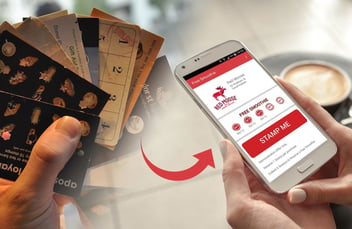Breakage Bad: When a Loyalty Program Stops Being a Loyalty Program
Not too long ago I stumbled upon an article wherein a loyalty guru was asked to weigh in on the future of rewards programs for credit cards. He opined that the long-term outlook for these types of programs, particularly those that dole out points, was heading for a sharp decline. The problem, he said, was that the convenience of mobile technology would inspire people to actually redeem their points, resulting in a revenue decrease from shrinking breakage.
Like Walter White from the popular AMC series Breaking Bad, some loyalty programs are turning to the dark side. They've abandoned their purpose - loyalty, the very thing they're named for - and instead are just another quick trick to bring people in the door and shuffle them right back out.
A loyalty program that's dependent upon breakage to be deemed a success isn't a loyalty program at all. It's just a broken promise.
There's an understanding that a loyalty program should tie in to revenue and overall profitability. But as we've mentioned, ROI is a two-way street. What's going to be profitable to the customer is also going to be profitable to the brand. The difference is loyalty program profitability is dependent upon long-term revenue that's not always obvious to measure, whereas breakage results in quick, simple t0 grasp gains.
Quick, simple-to-grasp gains are the opposite of antithesis of long-term customer engagement and loyalty.
Yet, there is clear evidence that brands benefit from usage and redemption. Consider these stats (culled from our collection of loyalty statistics):
- The two most important characteristics of loyalty programs according to consumers? Ease of redeeming rewards (55%) and ease of earning points (51%) (Mintel)
- Program members who redeem points are three times more likely to be word-of-mouth champions (LoyaltyOne)
- Programs see an 83% spend uplift following redemptions (LoyLogic via Loyalty360)
We understand that a certain level of breakage is going to happen naturally, and it can be counted in the books as revenue. The hard cost of valuable rewards isn't getting any more affordable, and it's harder and harder to capture a member's attention.
Instead of turning to the dark side, however, loyalty programs need to double down on redemptions. Find affordable, low hanging fruit that members can redeem for a handful of points. Push people toward rewards that have a good ratio of high perceived value and low cost, like discount programs. Partner with other brands to offer even more options. Still keep the high-point prizes for those members, but give them every option to burn in case they're not the hoarding type.
The more people redeem, even if just a few points at a time, the more engaged they become, leading to more spend with the organization (and a lesser likelihood they'll check out your competition).
It's hard to be regular Walter White, but as anyone who watched Breaking Bad knows, it's a lot harder to be Heisenberg because of the toll it took on everyone around him. Running a loyalty program that's genuinely trying to earn regular engagement and redemptions is a long-term success strategy. Building a program around breakage will fill up the bank accounts for a while, but eventually it's going to destroy customer relationships.
Tread lightly.
Topics: Rewards Programs, Customer Engagement, PowerDeals, Points and Miles Programs, Customer Incentives, Ongoing Incentive Programs, Access Development, points and miles rewards, customer loyalty
Written by: Brandon Carter











Share your Comment.